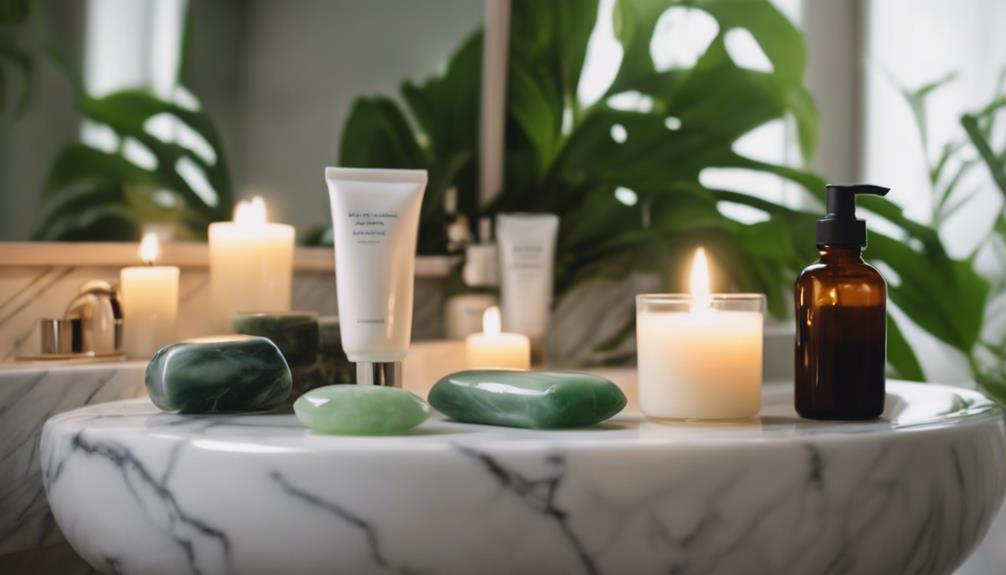In order to become proficient in the practice of safe tanning, it is essential to determine your skin type first – fair skin is prone to burning easily, while darker skin tans more effortlessly. However, regardless of your skin type, it is important for everyone to use sunscreen! Prior to sun exposure, make sure to exfoliate and hydrate your skin. When selecting tanning products, treat it like choosing your favorite shirt – it should match your style! Remember to always wear proper eye protection and start with shorter tanning sessions to prevent looking like a lobster. After tanning, it is crucial to treat your skin delicately to maintain that radiant glow. Stay tuned for more tips on achieving the perfect tan! When tanning at home, be sure to set a timer to avoid excessive UV exposure. Additionally, consider using self-tanning lotions or sprays as a safer alternative to traditional tanning methods. Always follow the instructions on the product and conduct a patch test before applying it all over your body. These home tanning tips can assist you in attaining a gorgeous, bronzed glow without jeopardizing your skin’s health.
Key Takeaways
- Assess your skin type to tailor your tanning approach and enhance results while ensuring safety.
- Prepare your skin by exfoliating, hydrating, and cleansing 24 hours before tanning for an even surface.
- Choose tanning products specifically designed for your skin type, avoiding those with SPF for indoor use.
- Protect your eyes with proper eyewear designed for tanning to prevent UV damage during sessions.
Assessing Skin Type
Before you start tanning, it's essential to assess your skin type to guarantee you're taking the right precautions for safe and effective results.
Think of your skin like a delicate flower; some need just a little sunlight, while others can bask all day!
If you've got fair skin, you'll want to be extra cautious, as your skin burns more easily and produces melanin more slowly.
On the flip side, if your skin's on the darker side, you might tan more easily, but don't skip the sunscreen!
Plus, always wear proper eye protection; your regular shades won't cut it!
Pre-Tanning Preparation
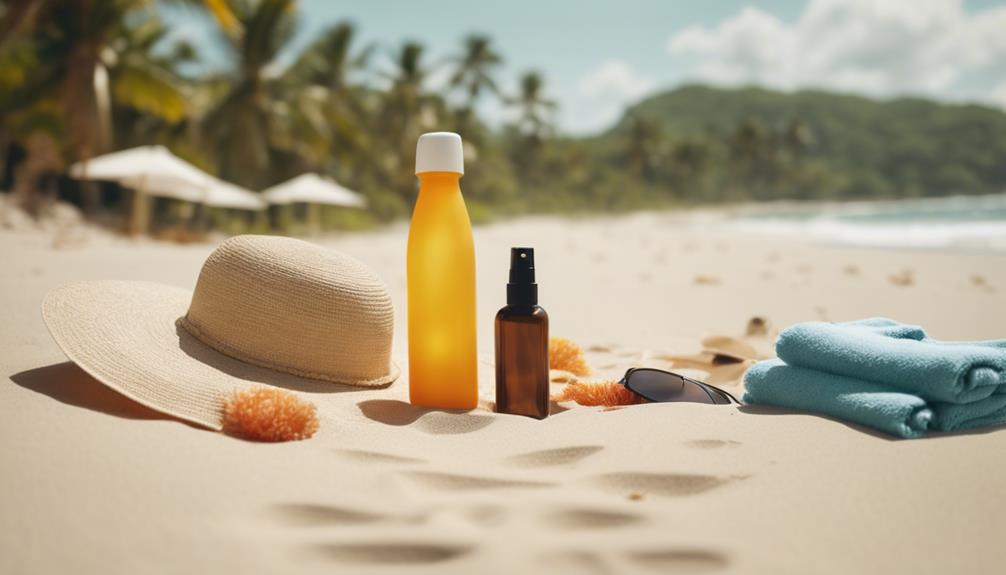
To achieve an even tan, exfoliate your skin 24 hours prior to tanning, removing dead cells for the best results. It's like prepping a canvas before painting—smooth surfaces show off your masterpiece!
Next, hydrate your skin with a light, non-oil based moisturizer; this keeps it supple without blocking those beautiful rays.
Make sure you cleanse away any makeup, oils, or perfumes, creating the perfect tanning surface.
Remember to apply SPF lip balm to protect your lips—because nobody wants sunburned lips!
And hey, ditch the makeup and jewelry; they can create uneven spots. Think of it like getting ready for a big game—every little detail counts!
With these steps, you're on your way to a fabulous tan!
Choosing Tanning Products
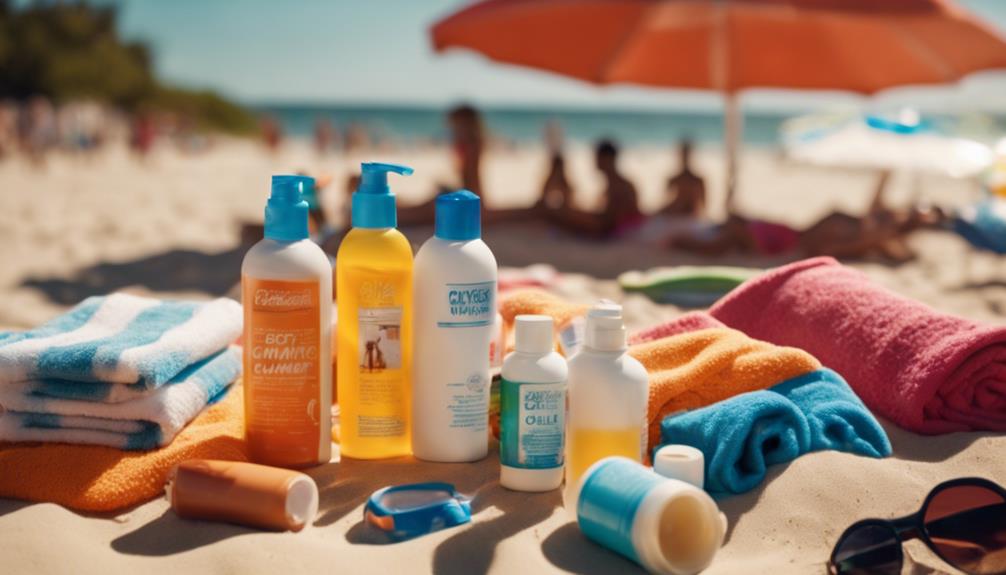
Selecting the right tanning products can greatly enhance your tanning experience and results.
Think of it like picking the perfect outfit for an event—you want something that fits well and looks great! When choosing indoor tanning lotions, avoid those with SPF, as they can block your tanning goals. Instead, look for products designed specifically for tanning, like bronzing or tingle lotions, which can give you that sun-kissed glow.
Don't forget to reflect on your skin type! Using lotions tailored to your unique needs makes a huge difference.
After tanning, applying a tan extender is like putting on a favorite jacket; it helps keep your color fresh and hydrated.
Eye Protection Essentials
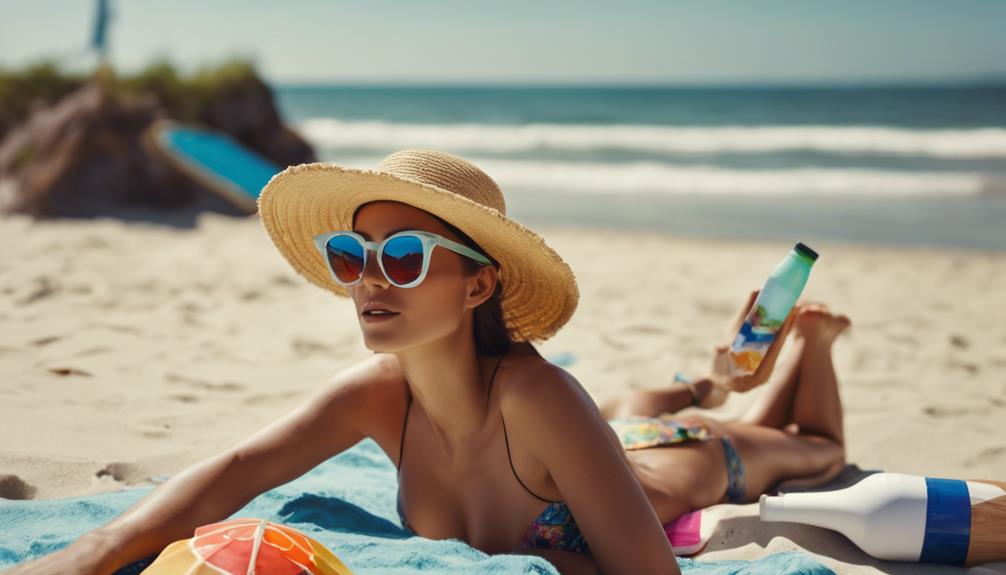
Protecting your eyes during tanning sessions is essential for preventing harmful UV exposure and maintaining eye health. You wouldn't go outside without sunglasses on a bright day, right? The same goes for tanning!
Regular sunglasses just won't cut it; you need proper protective eyewear designed specifically for tanning. These special goggles fit snugly and cover your eyes completely, keeping those pesky rays at bay.
Plus, don't forget your lips! Apply a high-SPF lip balm to shield them from UV damage, and reapply it often, especially after tanning.
Consulting with tanning salon experts can help you find trendy eyewear options that keep you safe while you soak up the sun. So, let's keep those peepers safe and stylish!
Managing Tanning Sessions
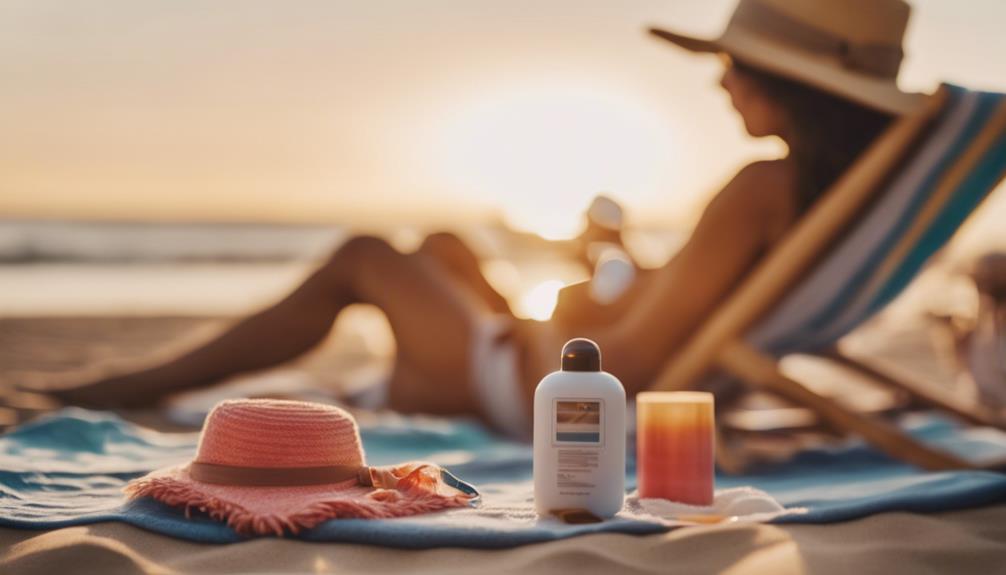
Start with shorter tanning sessions to avoid sunburn and skin damage while allowing your skin to adjust.
Think of tanning like building a Lego set; you wouldn't just dump all the pieces together, right? Gradually increase your exposure time as your skin gets used to the sun.
Keep an eye on how your skin reacts—if it turns pink, take a break! You want a golden glow, not a lobster look.
Remember, consistency is key; plan your sessions like a fun weekly activity.
By pacing yourself, you'll not only protect your skin but also achieve that beautiful tan you're after.
Post-Tanning Care
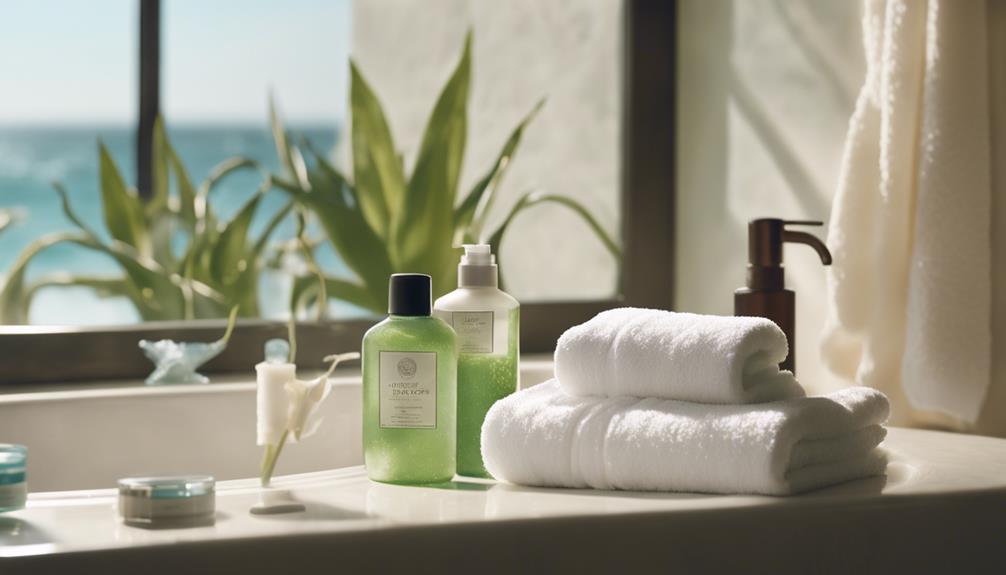
After achieving that golden glow, taking care of your skin post-tan is just as important to maintain and enhance your results.
First things first, hydrate! Slather on a light, non-oily moisturizer to keep that sun-kissed look shining bright. You wouldn't want your tan to fade faster than a summer fling, right?
When you shower, do it gently—no scrubbing! Just let the water wash away any excess. Also, avoid oils that can take your tan down a notch.
And don't forget your lips! Apply a high-SPF lip balm frequently to keep them protected.
Think of your post-tan care like watering a plant; it needs love to grow strong and beautiful.
Expert Tips and Insights

Consulting with tanning experts can provide you with tailored advice that maximizes your tanning experience and enhances skin safety. Think of them as your personal tanning coaches!
They'll help you understand your skin type, which is super important—fair skin needs extra care, while darker tones still need protection. You'll also discover the best products to use, like those special indoor tanning lotions that can make your tan pop!
Plus, they'll stress the importance of eye protection, because nobody wants to risk losing their vision for a sun-kissed glow.
Frequently Asked Questions
How Often Should I Tan for Optimal Results?
To achieve ideal results, you should start with shorter sessions, gradually increasing frequency based on your skin's response. Listen to your skin, and adjust your tanning schedule to avoid overexposure and potential damage.
Can I Tan if I Have Tattoos?
Tanning with tattoos takes tenderness. Protect your ink with proper products to prevent fading. Always apply sunscreen, and consider covering tattoos during tanning sessions. Careful choices keep your skin safe and your tattoos vibrant.
What Should I Do if I Get Sunburned?
If you get sunburned, cool your skin with aloe vera or a soothing lotion. Stay hydrated, avoid further sun exposure, and take anti-inflammatory medication if needed. Keep your skin moisturized to aid healing.
Are Tanning Beds Safer Than Outdoor Tanning?
Did you know that 90% of skin cancers are linked to UV exposure? Tanning beds can be misleadingly safer than outdoor tanning, but they still pose significant risks. Always prioritize your skin's health and safety.
Can I Use Self-Tanner After Tanning Sessions?
Yes, you can use self-tanner after tanning sessions. Just make sure your skin is clean and well-moisturized. This helps enhance your tan and provides an even, natural look without harming your skin.
Conclusion
Now that you're armed with the secrets to safe tanning, it's time to glow like the sun!
Think of your skin as a canvas, ready for that perfect, golden masterpiece.
Remember, just like a chef perfects their recipe, you've got to balance preparation, protection, and care.
So, grab those shades, slather on that sunscreen, and enjoy every moment basking in the warmth.
With these tips, your radiant tan will shine brighter than a summer day!



